By Ryan Lincoln
How to qualify for disability assistance, plus 2 strategies for keeping government benefits while receiving other financial support.
People with disabilities living in B.C. can take advantage of a variety of assistance planning opportunities, from group and private insurance to federal and provincial benefits. Let’s look at disability assistance offered by the provincial government by answering these questions:
- What government assistance is available to people with disabilities?
- How will financial support from other individuals such as family members affect government benefits?
- What strategies can you use to maintain government support while also receiving help from others?
How Provincial Disability Assistance Works
Provincial disability assistance falls under the Employment and Assistance for Persons with Disabilities Act. It consists of two components: monthly disability assistance payments and additional government benefits.
A person with disabilities with no dependent children can receive a maximum of about $975 per month in assistance payments. The amount is based on the individual’s income.
If a person qualifies for disability assistance—even if it isn’t full amount—they also qualify for supplemental benefits. Some examples: dental care, medical equipment and devices (including walkers, wheelchairs, and scooters), eyeglasses, and a monthly bus pass.
Who Is Eligible For Support?
To qualify for disability assistance, the individual in question must:
1) Qualify as a person with disabilities.
2) Meet an asset test.
3) Meet an income test.
The asset and income tests are judged on a family-unit basis. In both cases, a family unit means an applicant for or recipient of disability assistance along with their dependents. Dependents include children, a spouse, or someone who plays a parental role for the applicant’s children.
Who is included in the family unit? It depends whether the person receiving support is also the applicant. For example, if an adult receives disability assistance from the government, it makes them both applicant and recipient. Thus, assuming they have no spouse or children, they would be the sole person included in their family unit even if they live with a parent.
On the other hand, if a parent receives disability assistance on behalf of an adult with disabilities, they are considered a recipient and thus part of the family unit. Because members of the unit can dramatically boost its total income, give careful thought to determining who should be the person applying for and receiving assistance.
Asset test
The provincial asset test permits a person with disabilities and no dependent children to have $100,000 in non-exempt assets. If the individual and the rest of their family unit exceed that limit, they no longer qualify for provincial disability assistance.
Exempt assets include clothing, housing, and a motor vehicle for transportation. Using the asset exemption effectively is key to successful disability assistance planning.
Income test
A single person can claim a monthly exemption of $800 in employment income that won’t affect their entitlement to provincial disability assistance. Any employment income above $800, and most other types of income, will reduce disability assistance dollar-for-dollar until it reaches zero. At that point, the individual is no longer eligible for disability assistance.
But remember: the actual calculation may differ slightly from the computation of net income for tax purposes.
Strategies To Maintain Government Assistance
There are many tools available to provide financial help to an individual without reducing or eliminating their disability assistance from the government. Here, we’ll consider registered disability savings plans (RDSPs) and trusts.
Registered disability savings plans
An RDSP is a program for individuals who qualify for the disability tax credit under the federal Income Tax Act. Any income earned inside the RDSP is tax-exempt until withdrawn from the plan. Used correctly, this long-term tax deferral can be very advantageous. Besides tax deferral, opening an RDSP offers two more advantages. One, the government helps fund RDSPs through bonds and grants. Two, assets inside an RDSP or amounts withdrawn from it are exempt from the asset and income tests.
The beneficiary and holder of an RDSP
An RDSP consists of a beneficiary and a holder or holders. The holder—who sets up the RDSP and looks after it—and the beneficiary can often be the same person. Click here to read more.
If the beneficiary is under 19, the RDSP can only be established by a parent or guardian. Once the beneficiary turns 19, they can become a sole or joint holder of the plan. If the beneficiary of the RDSP is 19 or older and the RDSP has yet to be established, then in most situations, the beneficiary must also be the holder.
If you’re dealing with a child who may need help managing the RSDP, consider opening an RDSP while they are still under 19. This way the parents or guardian can be a joint holder and help ensure the funds are properly managed. In most cases, if the child turns 19, parents no longer have the option of becoming a holder.
RDSP contributions
Contributions can be made to an RDSP until the year the beneficiary turns 59. Although there’s a lifetime $200,000 contribution limit for an RDSP, there are no annual contribution limits. Once income is withdrawn, it’s included as taxable income for the beneficiary. Anyone can contribute to an RDSP with the holder’s written consent.
Government contributions
The federal government helps fund RDSPs with Canada Disability Savings Bonds and the Canada Disability Savings Grant. As long as the beneficiary is a resident of Canada and under age 50, their RDSP will qualify for government funding. Also, if you’re late in setting up an RDSP plan, a carry-forward provision allows the beneficiary to receive unused government contributions from the past 10 years.
Canada Disability Savings Bonds
The federal government will contribute $1,000 per year (for a maximum of 20 years) if the income for the beneficiary’s family unit is under $26,360. If the income for the beneficiary’s family unit is higher, the $1,000 will be prorated until the annual bond is eliminated.
Canada Disability Savings Grant
The federal government will also match contributions made to the RDSP. Although the amount it matches is subject to family income, there’s no income amount that eliminates the savings grant.
If the family unit’s annual income is less than $90,000, the government will grant $3 for every $1 contributed, up to a maximum of $500 that year. For the next $1,000, it will grant $2 for every $1 contributed, making the maximum annual grant $3,500.
Withdrawals
There are two types of RDSP withdrawals: lifetime disability assistance payments and disability assistance payments. The government intended the RDSP to be a long-term savings tool, so upon a withdrawal, the holder must pay back any government funding received in the previous 10 years. The repayment is called the assistance holdback amount (AHA).
Lifetime disability assistance payments
Lifetime disability assistance payments must start when the beneficiary turns 60, but they can begin earlier. Once started, these payments must be made annually from the RDSP until all the funds are withdrawn. This method allows withdrawal of minimum—once the beneficiary is 60—and maximum amounts.
Disability assistance payments
Disability assistance payments (DAPs) are discretionary payments made out of an RDSP. The maximum amount is dependent on whether the RDSP is primarily funded privately or through government contributions, and whether there are enough funds in the account to cover assistance holdback amounts.
Trusts
You can use trusts to protect the individual receiving disability benefits from the asset test. For the purposes of the test, amounts of less than $200,000 held in trust are considered exempt assets. However, if the person doesn’t have a beneficial interest in the trust, all assets held in it will be exempt.
Trusts can be discretionary and non-discretionary. Non-discretionary trusts give the beneficiary some control over payments from the trust, or the trust agreement may require the trustee to make certain payments. Discretionary trusts give the trustee full authority to manage and spend assets for the beneficiary. Click here for more about types of disability trusts.
Henson trusts
Trusts set up to preserve disability benefits are often called Henson trusts (based on the case Ontario vs. Henson, 1987). Henson trusts are discretionary trusts where the beneficiary has no legal capacity to access income or capital and no power to collapse the trust. Because the beneficiary has no control over distribution of the trust assets, they are not considered to have a beneficial interest. Therefore, assets inside a Henson trust are exempt from the asset test.
Often it makes sense to have other beneficiaries to the trust in addition to the person with disabilities. Besides making a stronger case that the person with a disability has no beneficial interest in the trust, this provides extra flexibility. For example, if the trust has to be terminated during the lifetime of the person with disabilities, the assets may be allocated to a different beneficiary, ensuring that the person with disabilities doesn’t go over the asset limit.
Qualified disability trusts
Qualified disability trusts (QDTs) are trusts that arise because of an individual’s death. One of the trust’s beneficiaries must qualify for the disability tax credit under the Income Tax Act. QDTs offer one big advantage over most other trusts: they’re taxed at graduated rates, which rise as income increases, rather than at the highest personal rate for any amount of income.
Payments from a trust
Most payments from a trust must be included in the income test. However, the following payments are exempt:
- Distributions from the trust for disability-related costs.
- Distributions from the trust for the acquisition of a family unit’s place of residence.
- Distributions from the trust used for registered education savings plan (RESP) contributions.
- Distributions from the trust used for RDSP contributions.
Disability-related costs include medical devices, caregiver services, education, renovations or maintenance to a housing unit to accommodate needs resulting for a person’s disability, and any other item or service that promotes the person’s independence.
The bottom line? You can use trusts to pay the beneficiary’s medical expenses while preserving their disability assistance.
Conclusion
As with many planning processes, we recommend that you start early, gather all the facts, and consult with appropriate advisers.
Posted in Strategic Insights


